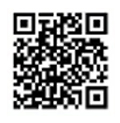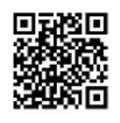目的应用营养风险筛查2002(Nutritional risk screening 2002,NRS2002 )对慢性肾脏病(CKD)患者进行营养风险筛查,了解CKD住院患者的营养状况以及NRS2002评分与其他营养相关指标的关系,指导临床及早对患 者进行营养干预、改善预后。方法对入院1周内的CKD住院患者应用NRS2002进行营养风险筛查,根据NRS2002评分将患者分为营养正常组和营养 风险组;比较两组患者的一般情况;检测比较两组患者的血红蛋白(Hb)、淋巴细胞计数、肾功能(血肌酐、尿素氮、尿酸、24 h尿蛋白)、总蛋 白、白蛋白(ALB)、血脂、电解质等水平;分析患者NRS2002评分与其他营养相关指标的关系。结果接受营养风险筛查的197例CKD住院患者中, 具有营养风险的患者共有53例(26.9%);营养风险组患者的BMI、血红蛋白(Hb)、总胆固醇、高密度脂蛋白胆固醇、低密度脂蛋白胆固醇、血 钠、血磷、尿素、肾小球滤过率(eGFR)水平均显著低于营养正常组患者,差异有统计学意义(P<0.05)。Pearson相关分析结果显示,患者的 NRS2002评分与其BMI、Hb、eGFR水平呈负相关,与其血钠水平呈正相关;患者的ALB水平与其eGFR水平呈负相关。结论NRS2002评分能较全面 地反映出慢性肾脏病住院患者的营养风险,为早期营养干预提供重要依据,对改善患者预后具有重要的临床意义。
当前位置:首页 / 慢性肾脏病住院患者的NRS2002营养筛查及其意义▲
论著
|
更新时间:2021-10-29
|
慢性肾脏病住院患者的NRS2002营养筛查及其意义▲
NRS2002 nutrition screening of inpatients with chronic kidney disease and its significance
内科 202116卷05期 页码:589-592
作者机构:1 信阳职业技术学院,河南省信阳市464000; 2 河南省人民医院营养科,郑州市450003;3郑州人民医院营养科,河南省郑州市450003
基金信息: ▲基金项目:2020年信阳市软科学研究计划项目(20200056);河南省教育厅人文社会科学研究一般项目资助性计划(2021-ZZJH-343);2021 年度河南省高等学校重点科研项目资助性计划(21A330005)
- 中文简介
- 英文简介
- 参考文献
ObjectiveTo conduct nutritional risk screening on patients with chronic kidney disease (CKD) using Nutritional Risk Screening 2002 (NRS2002), to understand nutritional state of CKD inpatients and the relationship between NRS2002 score and other nutrition-related indicators, so as to guide the clinic to conduct early nutrition intervention, and improve prognosis on patients. MethodsNRS2002 nutritional risk screening was performed on CKD inpatients within 1 week of admission. The patients were divided into normal nutrition group and nutritional risk group according to the NRS2002 score. The general conditions were compared between the two groups. The hemoglobin (Hb), lymphocyte counts, renal function (blood creatinine, urea nitrogen, uric acid, 24h urinary protein), total protein, albumin (ALB), blood lipids, electrolytes levels etc. were detected and compared between the two groups. The relationship between NRS2002 score and other nutrition-related indicators of the patients was analyzed. ResultsAmong the 197 CKD inpatients received nutritional risk screening, there were 53 cases (26.9%) with nutritional risk. BMI, Hb, total cholesterol, high density lipoprotein cholesterol, low density lipoprotein cholesterol, blood sodium, blood phosphorus, urea, and glomerular filtration rate (eGFR) levels in the nutritional risk group were significantly lower than those in the normal nutrition group, with statistically significant differences (P<0.05). Pearson correlation analysis results showed that the NRS2002 scores of patients was negatively correlated with BMI, Hb, and eGFR levels, while positively correlated with blood sodium level; the albumin (ALB) level in patients was negatively correlated with eGFR level. ConclusionsThe NRS2002 score can comprehensively reflect the nutritional risk of CKD inpatients, and provide an important basis for early nutritional intervention, and it has important clinical significance for improving the prognosis of patients.
-
无




 注册
注册 忘记密码
忘记密码 忘记用户名
忘记用户名 专家账号密码找回
专家账号密码找回 下载
下载 收藏
收藏
